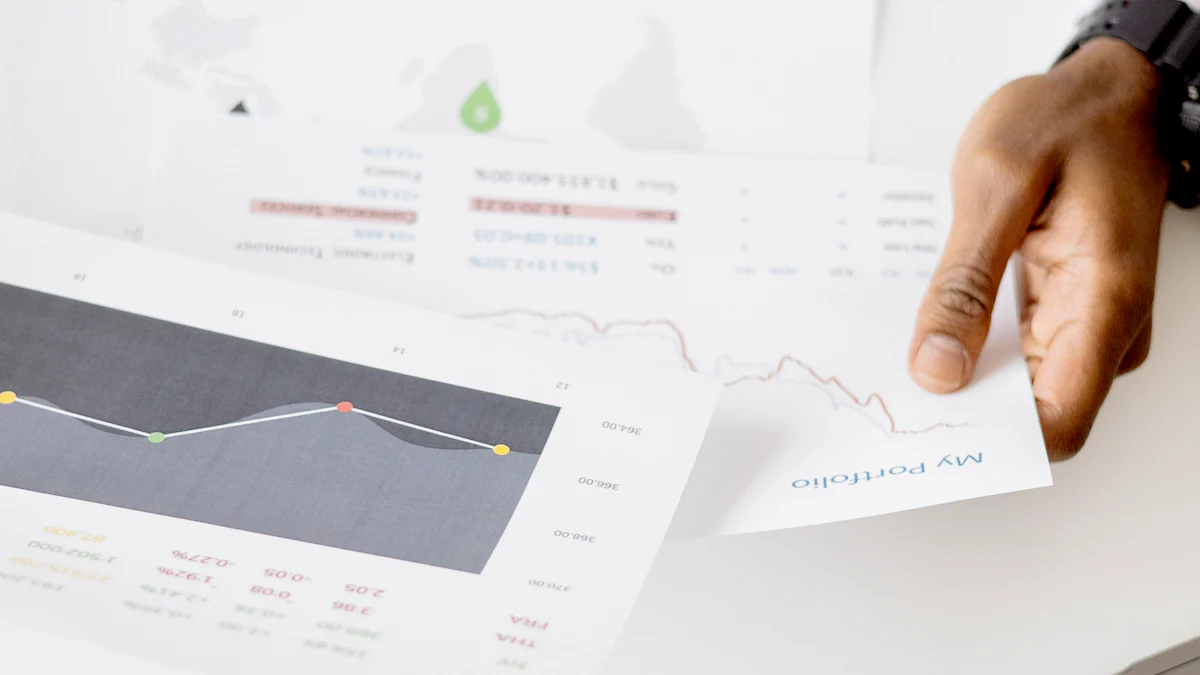How to Craft an Effective Data Analyst Resume in 2025
Try Aihirely for
Smarter Interview Prep
Experience real-time AI support tailored to your Resume.
Boost your confidence and ace every question with
AI Mock Interview.

Image Source: pexels
In 2025, a strong data analyst resume can set you apart in a rapidly growing field. The demand for data analysts continues to rise, with the global market projected to reach $178.5 billion and a 26.5% annual growth rate. Companies allocate $36 billion annually to data science roles, offering competitive salaries ranging from $75,000 for entry-level positions to $155,000 for senior roles. With over 220,000 positions in the U.S. alone, tailoring your resume to showcase your unique skills and achievements is essential to stand out in this competitive landscape.
Key Takeaways
-
Change your resume for each job. Show skills and experiences that match the job to prove you are a good choice.
-
Share clear results to show your success. Instead of listing tasks, write results like ‘made work faster by 20%’.
-
Keep your resume simple and neat. Use bullet points and the same style to make it easy to read.
-
Add both tech and people skills. Show you know tools like SQL and Python, and also teamwork and problem-solving.
-
Update your resume often. Add new skills, awards, and training to stay ready for jobs.
Key Elements of an Effective Data Analyst Resume

Image Source: pexels
Characteristics of a Strong Resume
Crafting a strong data analyst resume requires careful attention to detail. You need to focus on clarity and relevance. Recruiters spend only a few seconds scanning each resume, so presenting your information in a clear and concise manner is crucial. Highlight only the most relevant skills, experiences, and achievements that align with the job description. Avoid cluttering your resume with unnecessary details.
Quantifiable achievements make your resume stand out. Instead of listing responsibilities, showcase measurable results. For example, mention how you improved data processing efficiency by 20% or reduced reporting errors by 15%. These numbers demonstrate your impact and give recruiters a clear picture of your capabilities.
Tailoring your resume to the job description is another essential step. Each job posting has unique requirements. Customize your summary, skills, and experiences to match the specific role. This approach shows that you understand the company’s needs and are the right fit for the position.
Common Pitfalls to Avoid
Many candidates make mistakes that hurt their chances of landing an interview. Avoid overloading your resume with irrelevant details. Including outdated certifications or unrelated work experience distracts recruiters from your key qualifications. Keep your resume focused and concise.
Using generic or vague language is another common error. Phrases like “responsible for data analysis” lack impact. Instead, use action verbs and specific examples, such as “analyzed sales data to identify a 10% increase in revenue opportunities.”
Poor formatting and structure can also harm your resume’s readability. A resume that is too long or poorly organized may cause recruiters to lose interest. Ensure your work experience is listed in reverse chronological order, and double-check for spelling or grammatical errors. A clean, professional layout helps you make a positive impression.
By avoiding these pitfalls and focusing on clarity, measurable results, and tailored content, you can create a data analyst resume that captures attention and increases your chances of success.
Structuring Your Data Analyst Resume
Writing a Compelling Summary
Highlighting key skills and career goals
Your resume summary is the first thing recruiters notice. Use this section to highlight your most relevant skills and career goals. Tailor it to the data analyst role by focusing on your technical expertise and achievements. Quantify your impact whenever possible. For instance, mention how you “optimized data pipelines, reducing processing time by 30%.” Keep the summary concise and easy to read. Bullet points can help you organize this section effectively.
Tailoring the summary to the job posting
Every job posting has unique requirements. Adjust your summary to reflect the specific skills and experiences the employer seeks. If the role emphasizes data visualization, mention your proficiency in tools like Tableau or Power BI. This customization shows that you understand the company’s needs and are prepared to meet them.
Showcasing Your Skills
Technical skills (e.g., SQL, Python, Tableau)
Technical skills are the backbone of a data analyst resume. Highlight your expertise in programming languages like Python and SQL. Include advanced machine learning techniques and cloud computing knowledge. Data visualization tools such as Tableau or Power BI are also highly valued. These skills demonstrate your ability to handle complex datasets and deliver actionable insights.
Soft skills (e.g., communication, problem-solving)
Soft skills are equally important. Strong communication helps you explain data insights to non-technical stakeholders. Collaboration ensures you work effectively with teams across departments. Analytical thinking allows you to identify trends and solve problems efficiently. Organizational skills and attention to detail ensure accuracy in your work.
Presenting Your Work Experience
Using action verbs and measurable results
Action verbs make your work experience stand out. Use words like “spearheaded,” “optimized,” or “implemented” to describe your achievements. Pair these verbs with measurable results. For example, “spearheaded a data migration project, reducing downtime by 25%.” This approach highlights your contributions and impact.
Focusing on relevant projects and achievements
Focus on projects that align with the job description. If the role involves predictive modeling, mention a project where you built a machine learning model to forecast sales. Highlight achievements that demonstrate your ability to solve real-world problems. This focus ensures your resume remains relevant and compelling.
Including Education and Certifications
Listing degrees and relevant coursework
Your education section provides a foundation for your data analyst resume. List your degrees in reverse chronological order, starting with the most recent. Include the degree name, institution, and graduation date. If you’re a recent graduate, highlight relevant coursework to showcase your academic preparation.
Here’s a table of coursework that can strengthen your resume:
| Relevant Coursework |
|---|
| Machine Learning |
| Data Visualization |
| Big Data Analytics |
| Statistical Modeling |
| Data Structures |
| Algorithms |
| Database Systems |
| Data Mining |
These courses demonstrate your technical knowledge and analytical skills. If you’ve completed a capstone project or thesis, mention it briefly to show your ability to apply theoretical concepts to real-world problems.
Highlighting certifications (e.g., Google Data Analytics, AWS)
Certifications validate your expertise and make your resume more competitive. Employers value certifications that align with industry standards. Consider adding these to your resume:
-
Google Data Analytics Professional Certificate
-
Tableau Certified Data Analyst
-
CompTIA Data+ Certification
These certifications highlight your proficiency in tools, cloud platforms, and data visualization. If you’re pursuing a certification, mention it as “In Progress” to show your commitment to professional growth.
Additional Sections to Enhance Your Resume
Volunteer work or internships
Volunteer work and internships provide valuable experience, especially if you’re new to the field. Include roles where you applied data analysis skills, even in non-professional settings. For example, mention how you analyzed survey data for a nonprofit or optimized inventory tracking during an internship. These experiences demonstrate your ability to apply skills in practical scenarios.
Personal projects or portfolios
Personal projects and portfolios can set you apart. They showcase your skills and provide tangible proof of your abilities. For instance, you could include a project where you analyzed customer churn data or created a dashboard using Tableau. Add a link to your portfolio so employers can explore your work. This is especially helpful if you lack extensive professional experience.
Tip: A strong portfolio can make your resume stand out. It shows your initiative and ability to solve real-world problems.
Tailoring Your Resume to Job Descriptions
Analyzing Job Postings
Identifying keywords and required skills
Job postings often include specific keywords that highlight the skills and tools employers value most. Identifying these keywords helps you align your resume with the role. Look for terms like:
-
SAS
-
Tableau
-
SQL
-
Data Analysis
-
Data Visualization
-
R (Programming Language)
-
Microsoft SQL Server
-
Data Management
-
Healthcare Analytics
-
Clinical Trials
These keywords indicate the technical expertise and industry knowledge employers seek. Including them in your resume shows that you meet the job’s core requirements. Pay attention to the tools and skills mentioned repeatedly across postings. This pattern reveals what is essential for success in the role.
Understanding the company’s priorities
Each company has unique goals and challenges. Understanding these priorities helps you tailor your resume effectively. Research the company’s mission, recent projects, and industry focus. For example, a healthcare company may prioritize analytics for clinical trials, while a retail business may focus on customer behavior insights. Aligning your resume with these priorities demonstrates your ability to contribute to their objectives.
Customizing Your Resume
Aligning your skills and experience with the job requirements
Customizing your resume starts with analyzing the job description. Follow these steps to align your skills and experience:
-
Identify the job’s core requirements, including keywords and preferred qualifications.
-
Map your experience to these expectations by highlighting relevant achievements.
-
Focus on specific accomplishments, such as improving data visualization processes or optimizing SQL queries.
-
Be realistic about your level of expertise and avoid exaggerating your skills.
-
Exclude irrelevant details to maintain a professional and concise resume.
This approach ensures your resume reflects the employer’s needs while showcasing your strengths.
Adjusting your summary and achievements for relevance
Your summary and achievements should directly address the job description. Adjust your summary to emphasize the skills and tools mentioned in the posting. For example, if the role requires Tableau expertise, mention your experience creating dashboards that improved decision-making. Similarly, tailor your achievements to highlight relevant projects. Use measurable results, such as “increased reporting efficiency by 25%,” to demonstrate your impact. This customization makes your resume more compelling and increases your chances of standing out.
Examples of Data Analyst Resumes

Image Source: pexels
Entry-Level Data Analyst Resume
Highlighting internships and academic projects
When you have limited professional experience, internships and academic projects become your strongest assets. Tailor your resume summary to the job description by emphasizing relevant technical skills like SQL, Python, and data visualization tools. Include academic projects where you applied these skills. For example, mention a project where you analyzed sales data to identify trends or created a Tableau dashboard to visualize survey results. Use strong action verbs and quantifiable metrics to describe your contributions.
Focusing on transferable skills
Transferable skills can bridge the gap between your academic background and the job requirements. Customize your resume to include keywords from the job posting to pass applicant tracking systems (ATS). Highlight skills like problem-solving, teamwork, and communication. Use the STAR method to describe how you applied these skills in past experiences. For instance, explain how you collaborated with a team to analyze data and presented findings that influenced decision-making.
Mid-Level Data Analyst Resume
Emphasizing professional experience and achievements
At the mid-level, your professional experience takes center stage. Focus on specific contributions to team projects and their measurable outcomes. For example, describe how you made product recommendations based on data analysis, leading to a 15% increase in sales. Use a table to organize your achievements:
| Evidence Type | Description |
|---|---|
| Project Contribution | Made product recommendations based on analysis, increasing sales by 15%. |
| Quantifiable Metrics | Improved reporting efficiency by 20%, saving 10 hours per week. |
| Collaboration Skills | Worked with cross-functional teams to solve business problems effectively. |
Showcasing leadership or mentorship roles
Highlight leadership roles to demonstrate your ability to guide others. Mention experiences like coaching interns, training new hires, or managing small teams. For example, describe how you mentored three interns, helping them complete projects that improved data accuracy by 10%. Leadership examples show your potential for growth and your ability to contribute beyond technical tasks.
Senior-Level Data Analyst Resume
Demonstrating strategic impact and advanced skills
Senior-level resumes should emphasize strategic contributions and advanced technical skills. Highlight achievements like developing machine learning models or creating frameworks for A/B testing. For instance, explain how you analyzed customer segmentation data using K-means clustering, leading to a 25% increase in customer retention. Use a table to showcase your strategic impact:
| Achievement Description | Impact |
|---|---|
| Developed machine learning model to predict churn | Saved $500K in annual revenue |
| Analyzed user behavior data for UI redesign | Increased engagement by 30%, reduced bounce rate by 15% |
Highlighting management experience and certifications
Management experience and certifications set you apart at this level. Use leadership-oriented action verbs to describe your impact. For example, mention how you led a team of five analysts to optimize reporting processes, reducing errors by 20%. Include certifications like AWS Certified Data Analytics or Tableau Certified Data Analyst to demonstrate your commitment to professional growth. These elements show your readiness to take on high-level responsibilities.
Formatting and Language Tips for a Data Analyst Resume
Best Practices for Formatting
Choosing a clean and professional layout
A clean and professional layout ensures your resume grabs attention quickly. Use clear headings to organize sections like “Work Experience,” “Skills,” and “Education.” Bullet points make your achievements easy to scan. Maintain consistent formatting for dates, job titles, and company names. For example, if you list dates as “MM/YYYY” in one section, use the same format throughout. Avoid clutter by keeping your resume concise and focused on relevant details.
Tip: White space improves readability. Leave enough margins and spacing between sections to create a balanced look.
Using consistent fonts and spacing
Consistency in fonts and spacing creates a polished appearance. Choose a professional font like Arial, Calibri, or Times New Roman. Use one font style for headings and another for body text to create visual hierarchy. Keep font sizes between 10 and 12 points for readability. Align text uniformly, and ensure spacing between lines and sections is consistent. This attention to detail reflects your organizational skills.
Writing with Impact
Using action verbs and concise language
Action verbs make your accomplishments stand out. Use words like “analyzed,” “evaluated,” and “forecasted” to describe your contributions. For example, instead of saying, “Responsible for creating reports,” write, “Analyzed sales data and created reports that increased efficiency by 15%.” Pair these verbs with measurable results to show your impact. Keep sentences concise to maintain clarity and avoid overwhelming the reader.
Here’s a list of impactful action verbs to consider:
-
Analyzed
-
Researched
-
Predicted
-
Implemented
-
Achieved
Note: Strong verbs convey confidence and demonstrate your ability to deliver results.
Avoiding jargon and buzzwords
Avoid overloading your resume with technical jargon or buzzwords. While terms like “synergy” or “big data” may sound impressive, they often lack substance. Instead, focus on clear and specific language. For example, replace “leveraged data insights” with “used SQL to identify customer trends, increasing retention by 10%.” This approach ensures your resume is accessible to both technical and non-technical audiences.
Tip: Write for clarity. Assume the recruiter has limited time and wants to understand your qualifications quickly.
A well-structured data analyst resume can significantly boost your chances of landing your dream job. Focus on measurable impact by including specific numbers that showcase your contributions. Balance technical skills like Python or SQL with soft skills such as communication to demonstrate versatility. Highlight experience with modern tools like machine learning to stay relevant in 2025. Tailor your resume for each role, ensuring it aligns with the company’s needs. Regularly update your resume to reflect new achievements and certifications. By applying these strategies, you can create a resume that stands out in a competitive market.
FAQ
1. How long should a data analyst resume be?
Keep your resume to one page. Focus on relevant skills, achievements, and experiences. If you have extensive experience, two pages are acceptable, but only include the most impactful details.
2. What technical skills are essential for a data analyst in 2025?
You need proficiency in SQL, Python, and data visualization tools like Tableau or Power BI. Knowledge of machine learning, cloud platforms, and advanced Excel techniques will also give you an edge.
3. Should I include a portfolio link in my resume?
Yes, always include a portfolio link. A portfolio showcases your projects and skills, giving recruiters tangible proof of your abilities. Use platforms like GitHub or personal websites to display your work.
4. How do I tailor my resume for a specific job?
Analyze the job description. Identify keywords and required skills. Adjust your summary, skills, and achievements to align with the role. Highlight relevant projects and use measurable results to demonstrate your impact.
5. What certifications can boost my data analyst resume?
Certifications like Google Data Analytics, AWS Certified Data Analytics, and Tableau Certified Data Analyst are highly valued. They validate your expertise and show your commitment to professional growth.
Tip: Regularly update your resume with new skills, certifications, and achievements to stay competitive.
